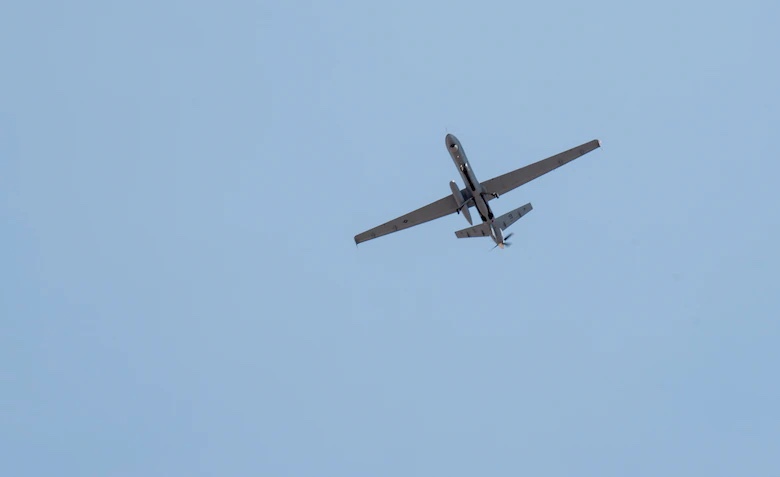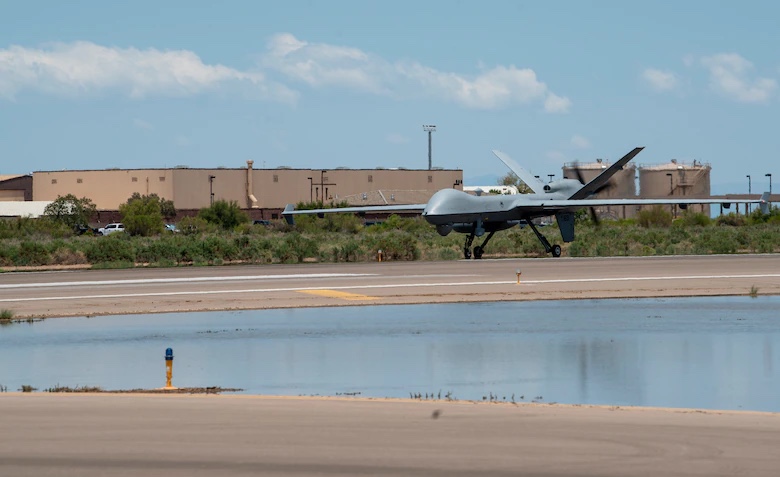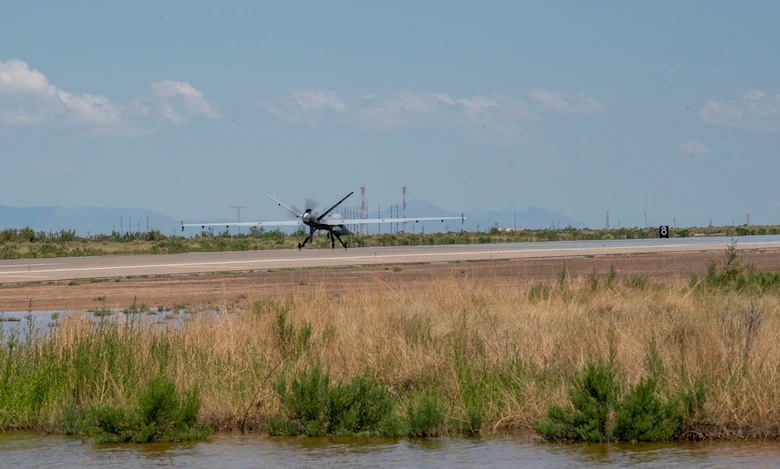CREECH AIR FORCE BASE, Nev. (AFNS) —
The 556th Test and Evaluation Squadron proved the MQ-9 Reaper’s Automatic Takeoff and Landing Capability (ATLC) is ready as of July 8, enabling crews to divert to airfields without traditional launch and recovery infrastructure or personnel. This capability is a key enabler for MQ-9 Agile Combat Employment and, combined with the MQ-9’s next software upgrade and receipt of the portable aircraft control station, will change how it will be employed in theaters worldwide.

Previously, all MQ-9 takeoffs and landings required a specialized launch and recovery crew located wherever the Reaper intended to land. But this time, with aircrew controlling the MQ-9 via satellite from their operating location at Nellis Air Force Base, the MQ-9 taxied to the runway and took off from Creech AFB, 55.6 miles away from the crew controlling it. The 556th TES recently proved this concept and landed at Creech AFB using ATLC while under satellite control from the aircrew at Nellis AFB, but this week’s sorties pushed the envelope much further.

On the first day of the two-day test, the 556th TES flew the MQ-9 from Creech AFB to Cannon AFB, New Mexico, landed, taxied, and took off again before returning to Creech AFB — all under satellite control. In this instance, the aircrew used imagery in the cockpit to generate the reference points for the automated landing system. On the second day, the destination changed to Holloman AFB, New Mexico, and the team again proved the capability, this time using the targeting pod to survey the runway, feed the ATLC system the data needed to fly an airport traffic pattern, land, and take off again.

Initially published ATLC procedures required an MQ-9 to be at the airfield of operation to taxi down the runway and have the aircrew electronically mark reference points when the aircraft was physically in position on the runway. The sorties proved that requirement obsolete. The technology and 556th TES-derived tactics are ready today for the aircraft to divert to a foreign field where an MQ-9 has never been before, and there is no longer a requirement for specialized infrastructure to land the unmanned aerial vehicle.
“We’re taking up the chief of staff of the Air Force’s charge to accelerate change,” stated Lt. Col. Michael Chmielewski, 556th TES commander. “This is a clear win and I couldn’t be prouder of the team that put this test together, this quickly, to include the support we received from Air Force Special Operations Command and the 27th Special Operations Wing at Cannon (AFB), as well as Air Education and Training Command and the 49th Wing at Holloman (AFB). Their support and patience made the impact of this test what it needed to be and we are grateful for the opportunity to work with them.”
According to Chmielewski, the ATLC capability will shift the Remotely Piloted Aircraft Enterprise’s mindset. It sets the enterprise up to become more agile with the next scheduled software release in spring 2022.
556th Test and Evaluation Squadron
Photos by photo by A1C Jessica Sanchez

